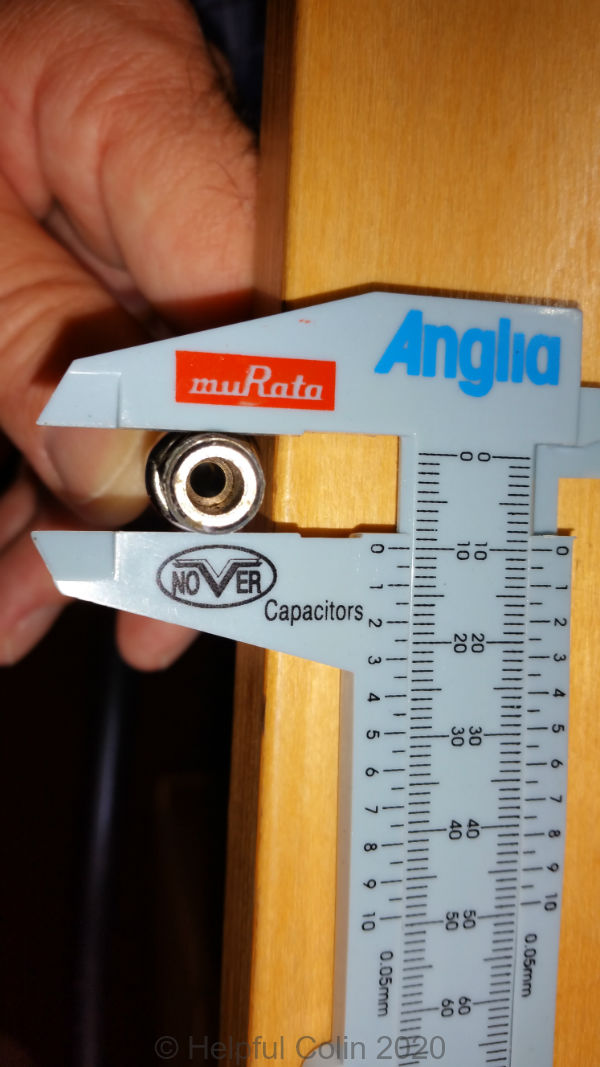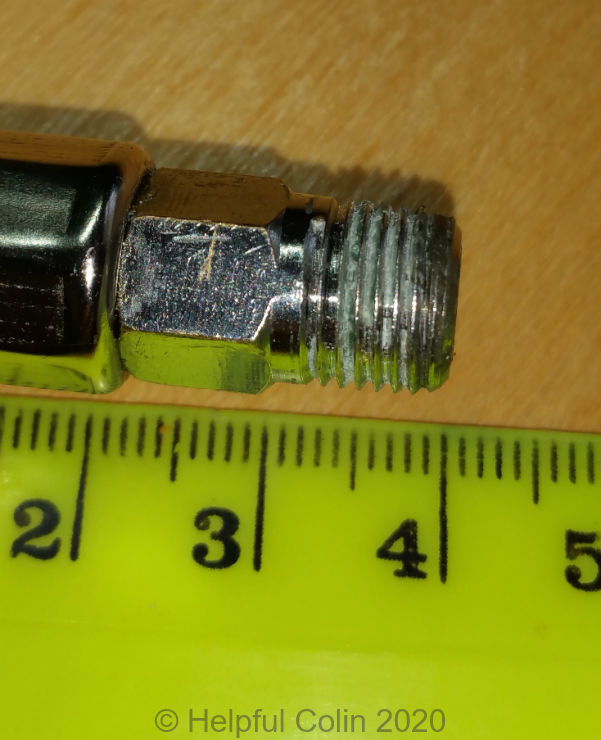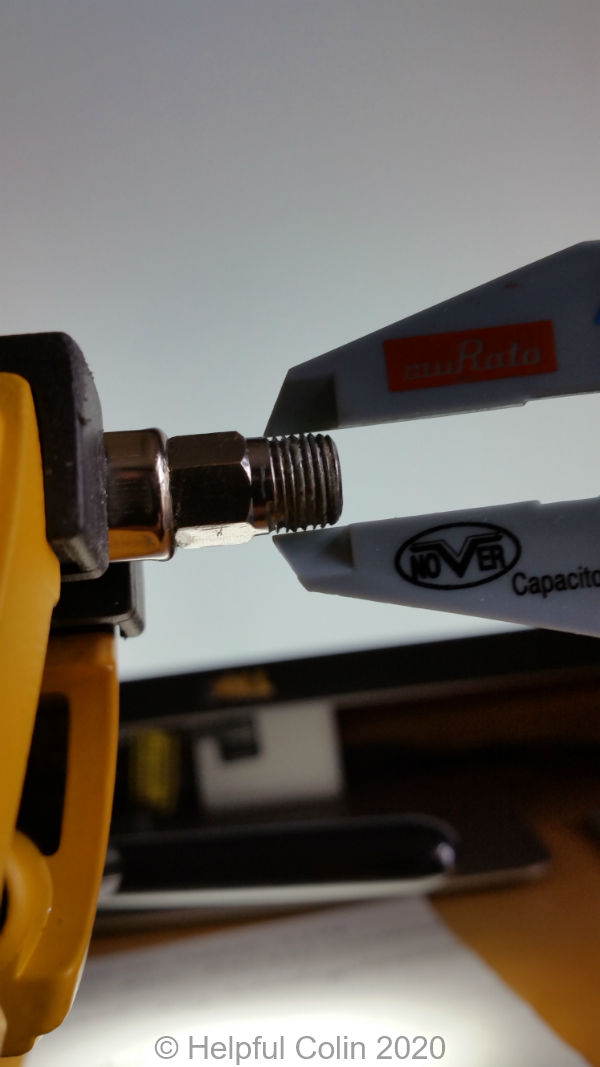Introduction
This post is about the RING Automotive Air Compressor RAC900 which is an excellent pump for inflating anything with a Schrader valve, (e.g. car tyres, bicycle tyres, etc.) or balls, airbeds, etc. (3 Inflation Adapters are supplied). It has to be powered by a 12 volt (30 amp peak) supply such as a car battery (not provided).
The Background To My Purchase
A few weeks ago I passed a friend in the street who was inflating his car tyres on his driveway with a RING Automotive Air Compressor RAC900. He was eagerly showed me his new tyre pump which was powered by his car battery. He explained that it had the advantages over other tyre pumps because it:
- inflated tyres very quickly,
- had a built-in pressure gauge,
- was very well-engineered with lovely brass parts,
- came with a long yellow curly plastic pipe to reach all tyres on a car,
- was very quiet compared to other 12 volt air compressors I have heard,
- was “Made in England”, Leeds in fact.
He told me he had bought it from a local automotive shop J. G. Bestwick Ltd. However they had to order it for him since they didn’t stock it.
I was impressed with what I saw.
Away from a petrol station I still used a foot pump. I once bought a cheap air compressor to inflate tyres but it was too noisy. I felt inhibited from using it at home on the driveway in case I disturbed my neighbours. So I got rid of it.
The one my friend showed me was a RING Automotive Air Compressor RAC900 for heavy duty work. See it at the RING web site. Here is the INSTRUCTION MANUAL.
I couldn’t wait to get one and found I could make a considerable saving buying it on-line through Amazon.
The Quality Of The RING Automotive Air Compressor RAC900
Most tyre pumps connect to the valve on the tyre with a quick release mechanism having a rubber insert which, when squeezed by a lever, swells and seals against the thread on the valve. These are usually OK when new but deteriorate with usage until they leak causing loss of applied pressure.
With the RING Automotive Air Compressor RAC900 the hose is attached by screwing the brass Schrader valve attachment onto the valve until it seals against a sealing ring. The valve attachment has a push and turn mechanism to allow the tyre to be deflated when the pressure is too high while the compressor is still attached to the wheel valve. The compressor comes with an instruction label attached to the pipe but it may rip off easily.
The gauge, with its brass push-together & quick-release coupling for joining to the yellow hose (shown below), is mounted at one end of a short black pipe while a Schrader valve connector is mounted at the other.



The take off from the compressor is via a short black high pressure hose. This then connects to the long yellow flexible coiled hose which can be stretched to reach distant tyres.
Keeping The RING Automotive Air Compressor RAC900 Pipe Connectors Clean
The connector coupling the two pipes is a quick release type and very well made with a back-pressure valve in it. The back pressure valve prevents a tyre deflating when it’s connected to the yellow hose but disconnected from the black hose, or the compressor is turned OFF. You can see it below:



Prevent Ingress Of Dirt In The Pipes
It would be difficult to remove dirt from inside the connectors, so keep dirt out of them. Once inside it may prevent them sealing when coupled. This is one of the arguments against this device.
Connecting The Air Compressor RAC900 To The Car Battery To Give It Power
The pump’s compressor is driven by a powerful looking 12 volt electric motor. It can draw up to 23 amps from the battery. This is too much current for a cigar lighter socket, commonly fused at only 15 amps. So, don’t connect the wires to a cigar lighter plug.
To use it with a car the bonnet must be open and the battery cover removed to expose the battery terminals.
The cable has an in-line 30 amp fuse and connects to the car battery with two substantial spring clips coloured BLACK and RED thus:
- The BLACK clip attaches to the NEGATIVE (-ve) battery terminal (the one connected to the car body on most modern cars),
- The RED clip attaches to the POSITIVE (+ve) battery terminal.
See images of battery connections below:


There is an ON/OFF switch at the motor end of the casing with a nice translucent rubber dust cover over it. I don’t know if it is completely waterproof.
The compressor and motor have four rubber feet at the corners which rest on the ground and absorb vibration. The unit also has a nice handle allowing the unit to be balanced in the hand when picked up. See featured image.
Below the compressor is connected to a car tyre:

The Inline Tyre Pressure Gauge
Here you can see a close-up of the inline Tyre Pressure Gauge:

It measures psi (pounds per square inch), BARs and kg/cm2
Carrying Bag For The Air Compressor RAC900
All of the parts can be kept in this nice bespoke bag with two compartments, a large one for the compressor and smaller one for the pipes and Inflation Adapters:


Details Of The Inflation Adapters Supplied
Below are the three Inflation Adapters included for inflating balls, airbeds, paddling pools, etc.:

Here are the sizes of the adapters A, B & C in the picture:
- A – Narrow End 8.5mm, Broad End 11.3mm, Length 13.5mm,
- B – Narrow End 5mm, Broad End 12.2mm, Length 40mm,
- C – Diameter 2mm, Length 32mm, open ended with 1mm Hole 5mm from end. Inflate balls with this adapter.





Leave a Reply